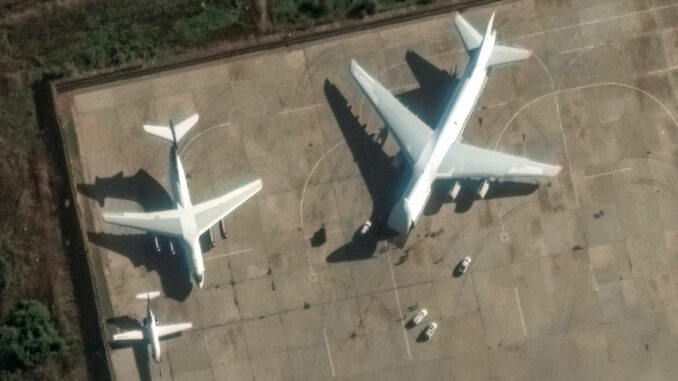
The Russian bases at Khmeimim and Tartous in Syria are showing signs of partial withdrawal. A strategic turning point in Russia’s military presence in the Mediterranean.
Recent satellite images show a gradual withdrawal of Russian forces from the strategic bases of Khmeimim and Tartous in Syria. These sites were home to advanced defense systems such as the S-400, and played a crucial role in Russian power projection in the Mediterranean. This move follows the collapse of Bashar Al-Assad’s regime, and is accompanied by complex discussions with the new transitional authority dominated by Hay’at Tahrir al-Sham (HTS). The implications of this partial withdrawal could reshape military dynamics in the region, increasing Russia’s vulnerabilities to growing threats, including drone attacks.
Khmeimim: a strategic hub in transformation
Since 2015, Khmeimim has been the nerve center of Russian air operations in Syria. Located near Latakia, this base has enabled Moscow to provide military support to the Assad regime against rebel factions. Its strategic importance is reinforced by :
- The capacity to accommodate major aircraft such as the Su-35 Flanker-E and Su-34 Fullback.
- The presence of advanced defense systems such as the S-400, capable of covering a 400 km radius.
Satellite images from December 2024 show, however, that the infrastructure has been partially dismantled. The S-400 missiles have been removed from their locations, the 91N6 Big Bird radars are in transport configuration, and several transport aircraft (An-124, Il-76) appear ready to evacuate equipment. This activity reflects a probable reorganization of Russian strategic priorities.
Tartous: a crucial naval base for russia
The port of Tartous, Russia’s only naval base in the Mediterranean, is a key anchorage point for Moscow’s naval forces. Thanks to a 49-year agreement signed in 2017, Russia has invested heavily in expanding this base to accommodate high-capacity vessels, such as the Admiral Gorshkov-class frigates.
However, recent images show the absence of Russian ships in port, although some vessels are stationed offshore. This repositioning is probably intended to minimize the risk of attack, as Tartous is a vulnerable target in the event of a crisis.

Removal of defences: increasing vulnerability
The dismantling of air defense systems, particularly the S-400, is exposing Russian bases to increased threats. Drone attacks, already frequent, could intensify. In 2018, a coordinated attack by homemade drones hit Khmeimim, highlighting the challenges of defense in an asymmetric warfare environment.
Remaining systems, such as the Pantsir-S1, may not be sufficient to cover the gaps left by the S-400. The reduction in defensive capabilities reflects a desire to limit operating costs, but compromises the security of remaining installations.
Geopolitical implications
The possible loss of Khmeimim and Tartous would represent a major strategic setback for Moscow:
- These bases project Russian military power into the Mediterranean, a key area for monitoring NATO activities.
- They provide a gateway to markets in the Middle East and Africa, consolidating Russian influence.
Ongoing discussions between Russia and HTS, though controversial, aim to ensure that these bases are maintained at a minimum. However, the fragility of the Syrian situation, marked by conflicts between Kurdish, Turkish and rebel factions, complicates any negotiations.
The partial withdrawal of Russian forces illustrates a strategic reassessment in the face of an uncertain environment. If Moscow manages to retain Khmeimim and Tartous, its position in the Mediterranean will remain solid, but the growing vulnerability of its installations underlines the challenges of a prolonged presence in Syria.
War Wings Daily is an independant magazine.